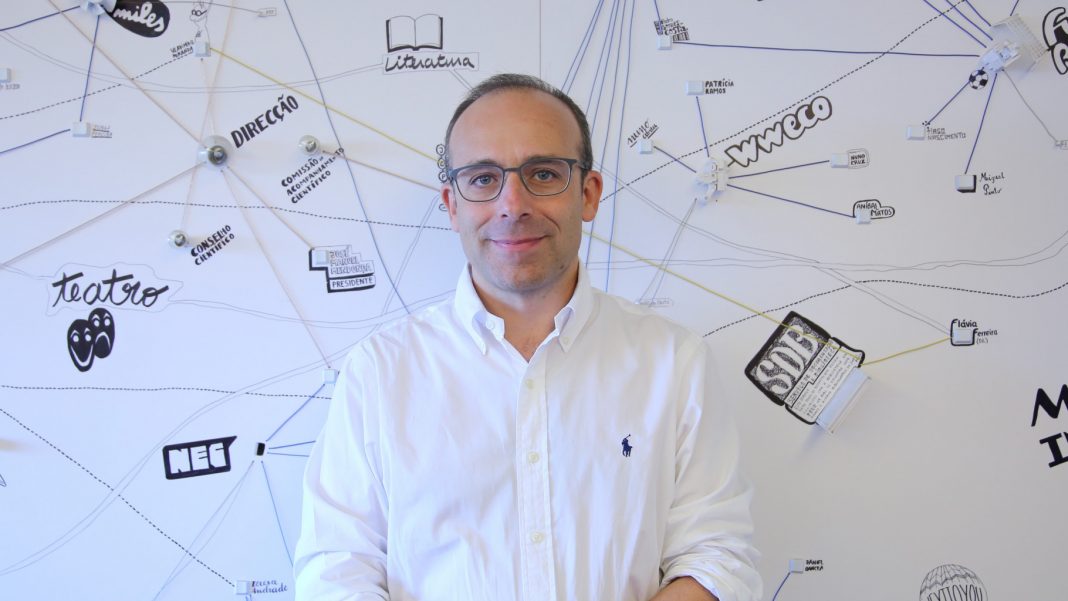Name: Pedro Camanho
Position: Area Director of Space-Earth Interactions in Portugal
Occupations: Professor of Mechanical Engineering at the Faculty of Engineering of the University of Porto (FEUP), President of the Associate Laboratory of Energy, Transportation and Aerospace (LAETA), Vice-President of Institute of Science and Innovation in Mechanical and Industrial Engineering (INEGI)
Organizations: FEUP, LAETA, INEGI
Pedro Camanho received his degree in Mechanical Engineering from FEUP in 1995. With a Ph.D. in Composite Materials from the Department of Aeronautics, Imperial College London, in 1999, Pedro Camanho has been a Visiting Scientist at NASA-Langley Research Center, and the US Air Force Research Laboratory.
Throughout his career, Pedro Camanho has stood out at the highest level. His physical model, named after himself, has been integrated into Digimat, a state-of-the-art multi-scale material modelling technology that speeds up the development process for composite materials and structures. More recently, Camanho has been appointed member of the Board of Editors of the renowned International Journal of Solids and Structures and featured on the Stanford University’s “World’s Top 2% Scientists List”, the first classification that systematically ranks all the most-cited scientists in each scientific field. The American University’s comprehensive database puts Pedro Camanho among the most influential, notorious researchers in the world in his research field – the top 2% scientists elite.
Want to learn more about our Area Director for Space-Earth Interactions? Then read his full interview below.
- How did the passion for mechanics come about?
As a teenager, I was fascinated by cars, motorbikes and airplanes, to the point of starting a racing career in karting, which came to an end when I joined FEUP to study Mechanical Engineering. The degree was and still is very demanding and there was not much room for multitasking. Before starting advanced studies at the University of Porto, I learned practical mechanics to optimize the set-up of my karts for the different tracks.
- Did you imagine you would become a teacher?
During the different phases of my life, I imagined many things, but I only entertained the idea of becoming a teacher halfway through my doctoral studies at Imperial College London.
- What is the Camanho Model?
It is called in Mechanics a constitutive model, basically, a physical model that predicts how advanced polymer-based composite materials deform and fail under thermo-mechanical loading. The model was implemented in the framework of Computational Mechanics. It is used by the aerospace and automotive industries in the analysis of composite structures, reducing both the recurring and non-recurring costs associated with their design and certification.
- How is it working with NASA?
It is both demanding and rewarding. Demanding in the sense that we are challenged to tackle complex problems that require all our focus, knowledge and creativity. Rewarding because we have the chance to collaborate with some of the brightest American scientists and engineers, and to support NASA’s mission using the results of our research.
- What are the main challenges you face in your work?
My work involves research, innovation, teaching, the coordination of a large research group, and the collaboration in programs such as that established between UT Austin and Portugal. I would say that the main challenge is to find the time and peace of mind to focus on research having other highly demanding activities, especially the coordination of a research group in the context of a highly bureaucratic national scientific system. Ovid wrote that ‘poetry comes fine-spun from a mind at peace’ and I think the same applies to science.
- How do you spend your free time?
Scuba diving whenever I have the chance, photographing, especially underwater, and riding my horses on the hills of the Minho region of Portugal.
- Where do you imagine yourself 20 years from now?
For sure, not retired. In the several collaborations that I had with American Universities, I came across several initiatives dedicated to addressing challenges faced by communities in the developing world. These challenges are not tackled using the latest and greatest technologies, but rather using bespoke engineering solutions that, while being low-cost and simple, are sustainable and may have a huge impact on the quality of life of local communities. This is something that I would like to explore in the next couple of decades.

